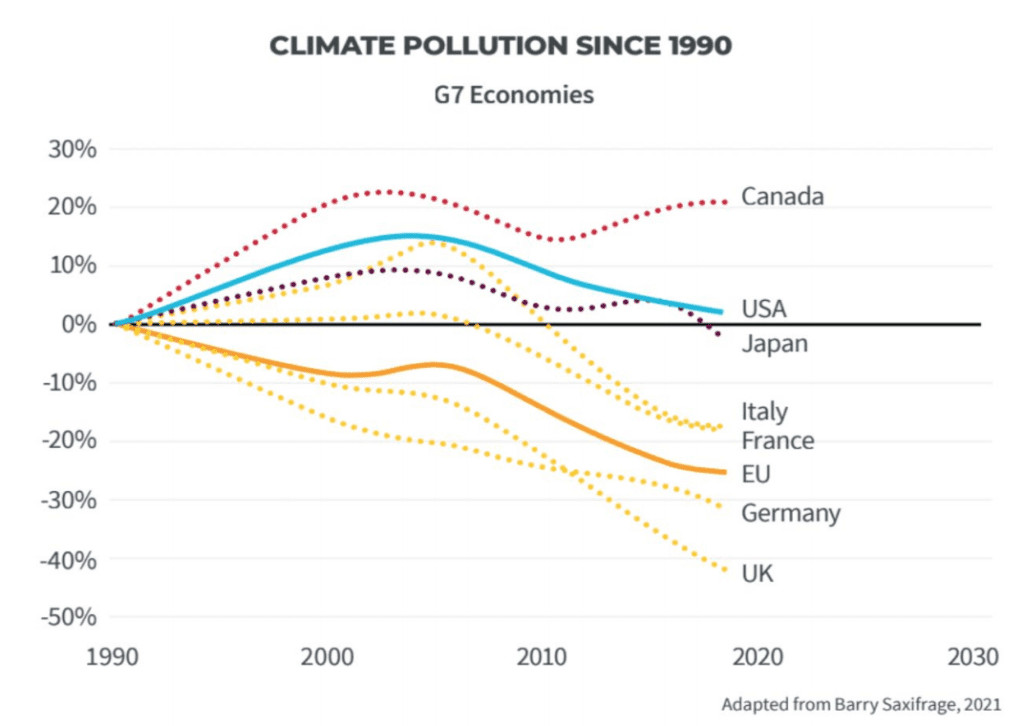
According to the National Inventory Report, Canada’s carbon emissions are heading in the wrong direction. For four straight years, they have gone up, not down.
The report, released in April, contains carbon emissions data for 2019. That year, Canada’s net emissions were 730 MT CO₂e, up slightly from 729 MT in the previous year. 2019 was the first year for the Liberal government’s carbon pricing. A ten-year low of 704 MT were emitted in 2016 and 716 MT were emitted in 2017.
Canada is now virtually where it was during 2005 when 739 MT CO₂e were emitted. 2005 is the benchmark year for the federal government’s target to reduce emissions 30% by 2030. This target will be increasingly out of reach unless the recent trend is reversed.
How did this happen?
Canada’s population and economy are driving the increase in emissions. Since 2005, both have grown. On a positive note, the per capita CO₂ emissions have gone down. GDP intensity-related indicators have also dipped below those associated with the 2008 economic recession.
One sector has led the way in emissions reductions since 2005: electricity generation. National carbon emissions associated with power production have declined by 56 MT (45%) over the past 15 years. The phaseout of coal-fired generation in Ontario and Alberta has had significant success. Ontario’s complete phaseout brought net coal emissions down by 29 MT. Alberta’s ongoing transition has reduced coal emissions by 22 MT relative to 2005. A federal mandate to retire all coal plants by 2030 has the potential to reduce emissions a further 42 MT.
Other sector emissions have stayed relatively constant. Emissions from heavy industry declined in 2009 with the recession and have since remained flat. Emissions for the light manufacturing and agriculture sectors have followed similar trends.
Emissions from the oil and gas and the transport sectors have surged. In transport, both passenger and freight, CO₂e have increased by 26 MT. Transport now accounts for 25% of total emissions. A 20% increase in the oil and gas sector has pushed up net emissions by 31 MT relative to 2005. Oil and gas now represent 26% of Canada’s total carbon emissions.
The most recent Federal government climate action plan relies on an escalating carbon tax, along with investment in zero-emission vehicles to meet Canada’s carbon pollution reduction target. For the Federal climate action plan to be effective, significant emissions reductions will need to come soon, particularly in the demand for traditional transport fuels.
It remains to be seen what impact a much higher carbon price will have in reversing the trend revealed in the National Inventory Report.












